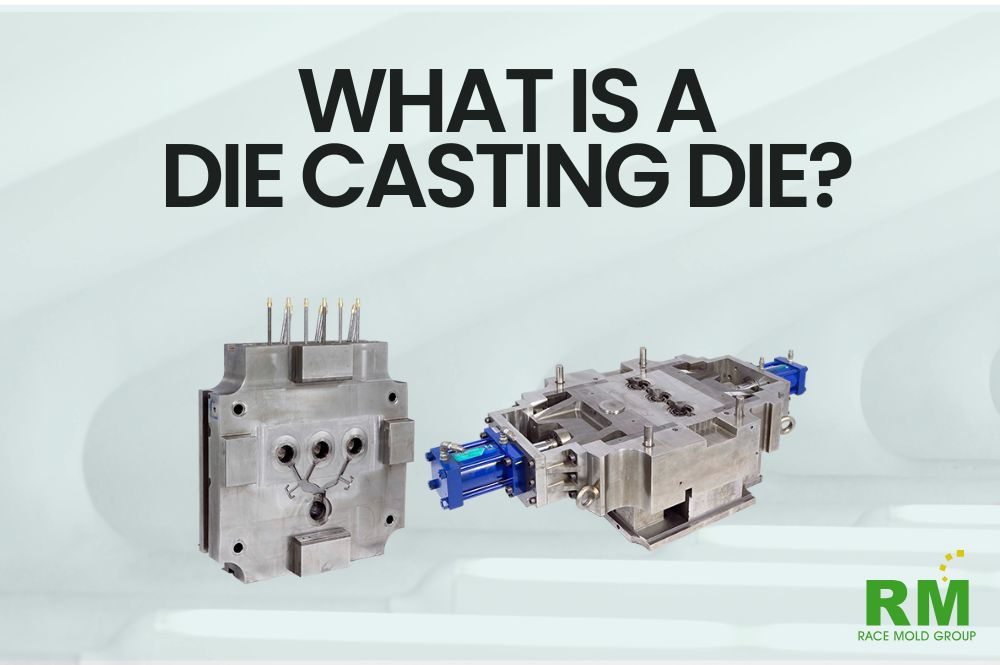
In the field of high-volume metal manufacturing, die casting is a widely used process that enables the production of complex and high-precision components. At the core of this process is the die casting die, a specialized tool that determines the shape, accuracy, and quality of the final product.
As a professional die casting die manufacturer based in Taiwan, RACE MOLD is committed to helping global manufacturers better understand the importance of high-quality die tooling. In this article, we will walk you through everything you need to know about die casting dies — from their structure and types to their industrial applications and benefits — so you can make informed decisions when selecting a trusted partner for your tooling needs.
Definition of Die Casting Die
A die casting die is a custom-engineered steel mold used in the die casting process to form molten metal into a specific shape under high pressure. Typically made from hardened tool steel, these dies are capable of withstanding extreme heat and pressure while delivering consistent, high-precision parts. The die usually consists of two halves – the cover die and the ejector die – which come together to form the cavity where the molten metal is injected.
After the metal solidifies, the mold opens, and the finished component is ejected. Die casting dies are critical for achieving uniformity, dimensional accuracy, and a smooth surface finish. They are widely used for producing aluminum, zinc, and magnesium alloy parts.
Common Types of Die Casting Dies
There are several types of die casting dies, each designed for specific applications and levels of complexity:
Single-cavity die
Used to produce one part per cycle. Ideal for low- to medium-volume production where part complexity is high.
Multi-cavity die
Designed to produce multiple identical parts in a single shot, increasing productivity and reducing unit cost.
Combination die
Allows for the production of different parts in the same mold. Useful for components that share similar geometries.
Unit die
Employs interchangeable inserts, enabling flexible and cost-effective production of different part designs.
Trim die
Used to remove excess material such as flash, runners, and gates after the casting process. This ensures that the final product meets dimensional and aesthetic requirements.
Materials Used in Die Casting Dies
Die casting dies are commonly used for processing non-ferrous metals. The choice of metal affects die design, cooling systems, and wear resistance. The most common die casting materials include:
- Aluminum: Lightweight, corrosion-resistant, and suitable for automotive and aerospace applications.
- Zinc: Excellent fluidity and dimensional stability. Ideal for small, intricate parts.
- Magnesium: Offers a good balance of strength and lightness, often used in electronics and medical devices.
Each material requires specific die features, including thermal management, part ejection design, and surface treatment.
Applications of Die Casting Dies in Key Industries
Die casting dies are essential tools across many industries that demand reliable, high-performance metal components. Typical applications include:
Automotive industry
Production of engine blocks, transmission housings, brackets, and structural parts with tight tolerances.
Electronics and communication
Manufacturing of heat sinks, enclosures, connectors, and components requiring excellent surface finish and durability.
Home appliances and consumer goods
Molded components like handles, frames, and decorative parts made with both functionality and appearance in mind.
Industrial equipment
Precision parts such as pump housings, gearbox casings, and structural supports for machinery.
Medical devices
Lightweight and corrosion-resistant parts used in surgical tools, imaging equipment, and diagnostic devices.
Advantages of Custom Die Casting Dies
Investing in a high-quality, custom-designed die casting die provides manufacturers with significant competitive advantages:
- Greater dimensional accuracy and repeatability in every production cycle
- Faster production rates due to optimized die design and cooling systems
- Reduced need for post-processing or machining
- Longer die life through the use of wear-resistant materials and coatings
- Better integration with automated production lines
A precision die also contributes to reduced production costs and shorter lead times, which is essential in today's fast-paced industrial landscape.
Why Choose RACE MOLD for Your Die Casting Die Needs
As a professional and experienced mold manufacturer based in Taiwan, RACE MOLD provides complete die casting die solutions tailored to your production goals. We specialize in aluminum and zinc die casting dies as well as post-casting trim dies, all developed with precision engineering and strict quality control.
Our capabilities include:
- In-house design and simulation for mold flow and cooling analysis
- Advanced CNC machining and EDM processing
- Surface treatment and hardness control for extended tool life
- Comprehensive quality inspection and functional testing
- Fast delivery and international support for clients worldwide
Whether you are launching a new product line or optimizing an existing casting process, our team at RACE MOLD is ready to provide reliable, high-performance tooling solutions that exceed expectations.
Contact Us
Your success in die casting starts with the right tooling partner. Contact RACE MOLD today to discuss your next die casting die project. Let us help you turn complex designs into production-ready molds with speed, precision, and confidence.




